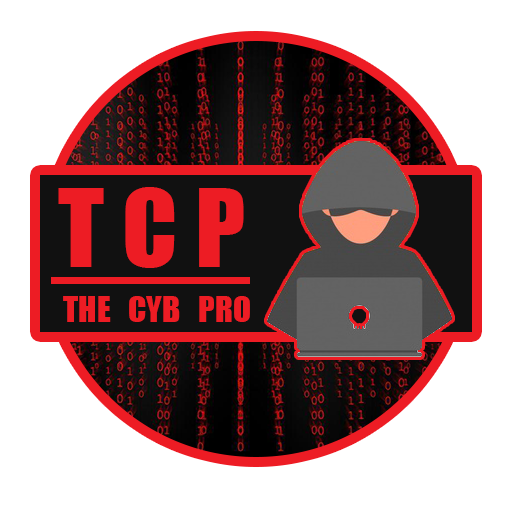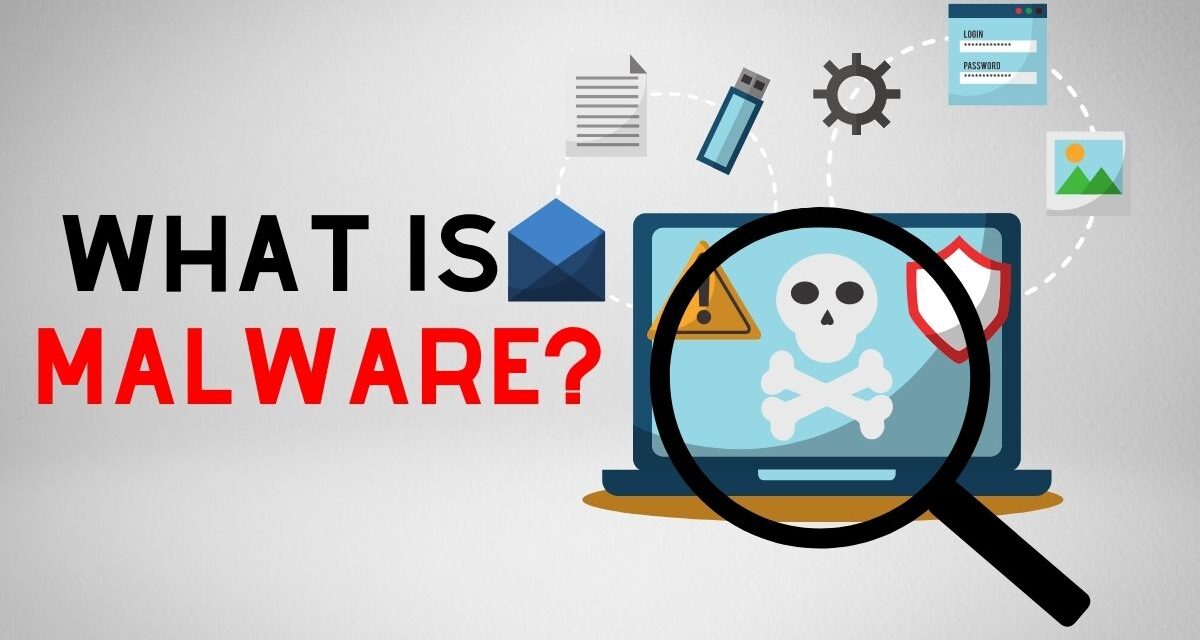What is Malware?
Malware is software that attempts to access computer systems without permission. Malware can include computer viruses, trojan horses, malware, spyware, and other malicious programs. This is the simple definition of malware. Later in this article, I will explain different types of malware & How hackers create malware?
Different Types of Malware?
There are various types of computers viruses, the most common 10 types of malware are listed below with their characteristics which make them different from others.
- Viruses – A virus is a malicious executable program attached to an executable file. When infected files are passed from one system to another, the virus spreads. Viruses can be benign or can alter or delete data. A virus can be activated by opening a file. A program virus can infect other programs on your computer once it is active.
- Worms – Worms can replicate themselves on the network, attaching to files and searching for paths between computers. Worms can slow down networks. To run a virus, a host program is required. However, worms can be run independently. Once a worm has infected a host, it can spread quickly through the network.
- Spyware – It is designed to steal information from computers for third parties. Spyware gathers information and then sends it to hackers.
- Adware – Adware is malicious software that collects information about your computer and displays appropriate advertisements to you. Adware isn’t always dangerous but it can sometimes cause problems for your computer. Adware can cause your browser to redirect to unsafe websites and even Trojan horses or spyware. A large amount of adware can cause your system to slow down. It is important to ensure that your system is constantly and intelligently scanned for malicious adware.
- Trojan horse – Trojan horses are malware that performs malicious operations in the disguise of performing a desired action, such as playing online games, opening a document e.t.c. The Trojan horse is different from viruses because it binds itself with non-executable files such as audio and image files.
- Logic Bombs – A logic bomb is malicious software that activates malicious code by using a trigger. The logic bomb will not function until the trigger event occurs. A logic bomb can be used to execute malicious code and cause harm to computers once it is activated. Recent cybersecurity experts discovered that logic bombs can be used to attack and destroy hardware components on a server or workstation, including cooling fans and hard drives. These devices are overdriven until they fail or overheat by the logic bomb.
- Ransomware – Ransomware locks the computer or any data until the victim pays. Ransomware locks the computer’s data with a key that is not known to the victim. To retrieve the data, the user must pay a ransom to the criminals. After the ransom is paid, the victim can resume the use of his/her system.
- Backdoors – The backdoor bypasses authentication to gain access to a system. The backdoor allows cybercriminals to gain future access to the system, even if the organization has fixed the vulnerability that was used to attack it.
- Rootkits – Rootkits modify the OS to create a backdoor. The backdoor is then used by hackers to remotely access the computer. Rootkits use software flaws to alter system files.
- Keyloggers – Keylogger records all information entered on a user’s computer to get passwords or other sensitive information. They then send it to the source of keylogging.



Heya i?m for the first time here. I found this board and I find It really useful & it helped me out a lot. I am hoping to present one thing again and help others such as you aided me.
May I request that you elaborate on that? Your posts have been extremely helpful to me. Thank you!
You’ve been great to me. Thank you!
Dear can you please write more on this? Your posts are always helpful to me. Thank you!
Thank you for sharing this article with me. It helped me a lot and I love it.
I want to thank you for your assistance and this post. It’s been great.
You’ve been very helpful to me. Thank you!
Dude these articles are great. They helped me a lot.
Thanks for writing this article
You helped me a lot by posting this article and I love what I’m learning.
You’ve been a great aid to me. You’re welcome!
That’s what i mean when i say that content is the king!
Thank you for writing so many excellent articles. May I request more information on the subject?
I really enjoyed reading your post and it helped me a lot.
I blog often and I really appreciate your information. The
article has truly peaked my interest. I’m
going to book mark your blog and keep checking for new details about
once a week. I subscribed to your RSS feed too.
my web blog – tracfone 2022
Nature will come through the claws and the hound will follow the hare.
Every weekend i used to go to see this website, for the reason that i want
enjoyment, as this this web site conations actually pleasant funny data too.
Here is my homepage; tracfone
I like this weblog very much so much great information.
Wow, this paragraph is nice, my younger sister is analyzing these things, so I am going to convey her.
It is indeed my belief that mesothelioma is usually the most lethal cancer. It contains unusual properties. The more I really look at it the more I am sure it does not work like a true solid cells cancer. In the event that mesothelioma is actually a rogue viral infection, in that case there is the possibility of developing a vaccine and also offering vaccination for asbestos subjected people who are vulnerable to high risk associated with developing future asbestos associated malignancies. Thanks for expressing your ideas on this important health issue.
Pretty nice post. I simply stumbled upon your weblog and wanted to mention that I’ve really loved browsing your weblog posts. After all I will be subscribing for your rss feed and I am hoping you write again very soon!
Good day! Do you know if they make any plugins to protect against hackers? I’m kinda paranoid about losing everything I’ve worked hard on. Any suggestions?
I am so happy to read this. This is the kind of manual that needs to be given and not the random misinformation that is at the other blogs. Appreciate your sharing this greatest doc.
I do agree with all of the ideas you’ve presented in your post. They are very convincing and will certainly work. Still, the posts are too short for beginners. Could you please extend them a little from next time? Thanks for the post.
very nice publish, i definitely love this web site, keep on it
Hey! Quick question that’s totally off topic. Do you know how to make your site mobile friendly? My weblog looks weird when viewing from my iphone. I’m trying to find a template or plugin that might be able to fix this issue. If you have any recommendations, please share. With thanks!
hi!,I like your writing very so much! proportion we communicate extra approximately your post on AOL? I need a specialist in this area to resolve my problem. May be that’s you! Taking a look forward to see you.
Thanks for discussing your ideas here. The other matter is that any time a problem arises with a computer motherboard, people should not consider the risk involving repairing it themselves because if it is not done properly it can lead to permanent damage to the complete laptop. It is usually safe just to approach your dealer of your laptop for any repair of that motherboard. They have got technicians who may have an expertise in dealing with pc motherboard difficulties and can carry out the right diagnosis and carry out repairs.
I learned more a new challenge on this fat reduction issue. A single issue is a good nutrition is tremendously vital any time dieting. A tremendous reduction in fast foods, sugary foods, fried foods, sugary foods, pork, and bright flour products could possibly be necessary. Holding wastes unwanted organisms, and harmful toxins may prevent desired goals for losing weight. While selected drugs quickly solve the matter, the nasty side effects are certainly not worth it, they usually never offer you more than a non permanent solution. It is just a known undeniable fact that 95 of diet plans fail. Thank you for sharing your ideas on this blog site.
One other issue is when you are in a problem where you do not have a cosigner then you may really want to try to wear out all of your money for college options. You could find many funds and other scholarship grants that will give you money to help with university expenses. Thanks a lot for the post.
Would you be all for exchanging hyperlinks?
fantastic submit, very informative. I’m wondering why the opposite experts of this sector do not understand this. You should continue your writing. I’m confident, you have a huge readers’ base already!
Thank you for the auspicious writeup. It in truth was once a leisure account it. Look advanced to far added agreeable from you! However, how can we keep up a correspondence?
Spot on with this write-up, I really think this website wants way more consideration. I抣l probably be again to learn much more, thanks for that info.
Terrific work! This is the type of info that should be shared around the net. Shame on Google for not positioning this post higher! Come on over and visit my web site . Thanks =)
One other issue issue is that video games usually are serious naturally with the key focus on learning rather than leisure. Although, there is an entertainment facet to keep children engaged, each and every game will likely be designed to focus on a specific experience or program, such as mathematics or scientific disciplines. Thanks for your post.
Wow! Thank you! I always wanted to write on my blog something like that. Can I take a fragment of your post to my blog?
I was suggested this web site by my cousin. I am now not sure whether this post is written through him as no one else realize such specified about my trouble. You’re incredible! Thank you!
You actually make it appear really easy together with your presentation but I find this matter to be really one thing which I think I would never understand. It kind of feels too complicated and extremely large for me. I’m looking ahead to your next put up, I will try to get the hang of it!
obviously like your web site but you need to check the spelling on several of your posts. A number of them are rife with spelling issues and I find it very troublesome to tell the truth nevertheless I抣l definitely come back again.
Wow that was unusual. I just wrote an very long comment but after I clicked submit my comment didn’t appear. Grrrr… well I’m not writing all that over again. Anyways, just wanted to say wonderful blog!
I have been reading out many of your articles and it’s pretty nice stuff. I will surely bookmark your blog.
Hi! This post couldn’t be written any better! Reading through this post reminds me of my old room mate! He always kept chatting about this. I will forward this write-up to him. Fairly certain he will have a good read. Many thanks for sharing!
I would like to thank you for the efforts you have put in writing this blog. I am hoping the same high-grade web site post from you in the upcoming also. Actually your creative writing skills has encouraged me to get my own blog now. Actually the blogging is spreading its wings rapidly. Your write up is a great example of it.
Thank you for some other magnificent post. The place else may anybody get that type of info in such an ideal method of writing? I have a presentation next week, and I’m at the search for such info.
Thank you for this article. I might also like to express that it can often be hard if you are in school and just starting out to create a long credit ranking. There are many individuals who are only trying to pull through and have a good or good credit history can be a difficult thing to have.
The things i have generally told people is that when evaluating a good on-line electronics shop, there are a few components that you have to take into account. First and foremost, you want to make sure to get a reputable as well as reliable store that has enjoyed great evaluations and classification from other people and business world people. This will make certain you are dealing with a well-known store providing you with good support and assistance to their patrons. Many thanks sharing your opinions on this blog.
Wonderful beat ! I wish to apprentice while you amend your site, how could i subscribe for a blog website? The account helped me a acceptable deal. I had been a little bit acquainted of this your broadcast provided bright clear concept
hey there and thanks on your info ?I抳e certainly picked up anything new from proper here. I did however expertise several technical points using this site, since I skilled to reload the web site many times previous to I could get it to load correctly. I had been puzzling over in case your web hosting is OK? Now not that I am complaining, however sluggish loading cases times will often affect your placement in google and can injury your quality ranking if advertising and ***********|advertising|advertising|advertising and *********** with Adwords. Anyway I抦 including this RSS to my email and can look out for a lot extra of your respective intriguing content. Make sure you replace this again soon..
I’m still learning from you, while I’m trying to achieve my goals. I certainly liked reading everything that is posted on your site.Keep the stories coming. I enjoyed it!
Heya i am for the first time here. I found this board and I find It truly useful & it helped me out a lot. I hope to give something back and help others like you helped me.
Howdy! This post could not be written any better! Reading through this post reminds me of my old room mate! He always kept chatting about this. I will forward this post to him. Fairly certain he will have a good read. Thanks for sharing!
You can definitely see your skills within the work you write. The world hopes for more passionate writers like you who are not afraid to say how they believe. Always follow your heart.
I really like your blog.. very nice colors & theme. Did you make this website yourself or did you hire someone to do it for you? Plz answer back as I’m looking to construct my own blog and would like to find out where u got this from. many thanks